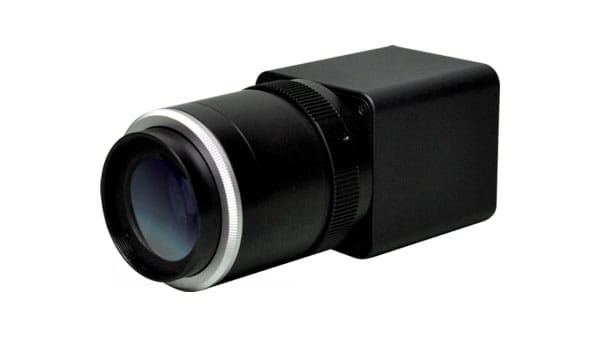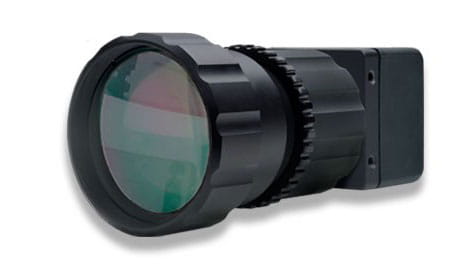
Forest fires are a common problem in the western part of the United States for fire fighters. Such fires generate a large volume of aerosols, typically appearing as light, opaque smoke that obscures vision to large areas of terrain. Because fire fighters must work in this environment, any means to improve visibility for air and ground crews could have significant value.

This video shows the scene from the air, switching between the obscured visible camera and the SWIR image. Note how the SWIR image reveals the actual fire location.
It turns out that the fine airborne particles seen in most forest fires often completely block light in the visible part of the spectrum, but allow SWIR light to pass through almost unaffected. The scenes above were taken in visible and SWIR wavelengths from an aircraft flying above a recent fire on Mount Hood in Oregon. The visible image shows large, billowing clouds of smoke; whereas, in the SWIR image, much of the smoke is transparent, allowing the capability to see flames and individual trees. Using SWIR, the actual progress of the fire, jumping from tree to tree, may be imaged and tracked. The video, is particularly dramatic in showing the benefits that Sensors Unlimited SWIR cameras offer; especially in terms of new capabilities for fire fighters. We stress that the ability of SWIR light to penetrate aerosols is seen in many, but not all situations. At some level of aerosol density, even SWIR wavelengths will not pass; however, as we have seen in fog SWIR continues to provide a substantial advantage when compared against visible, Silicon-based, imagers.
SWIR cameras can also see well in many otherwise dark conditions thanks to atmospheric "night glow", a night radiance that takes place with the recombination of hydrogen and oxygen in the upper atmosphere at night. Improved nighttime identification and contrast are possible with the addition of covert illumination.
Recommended product categories



